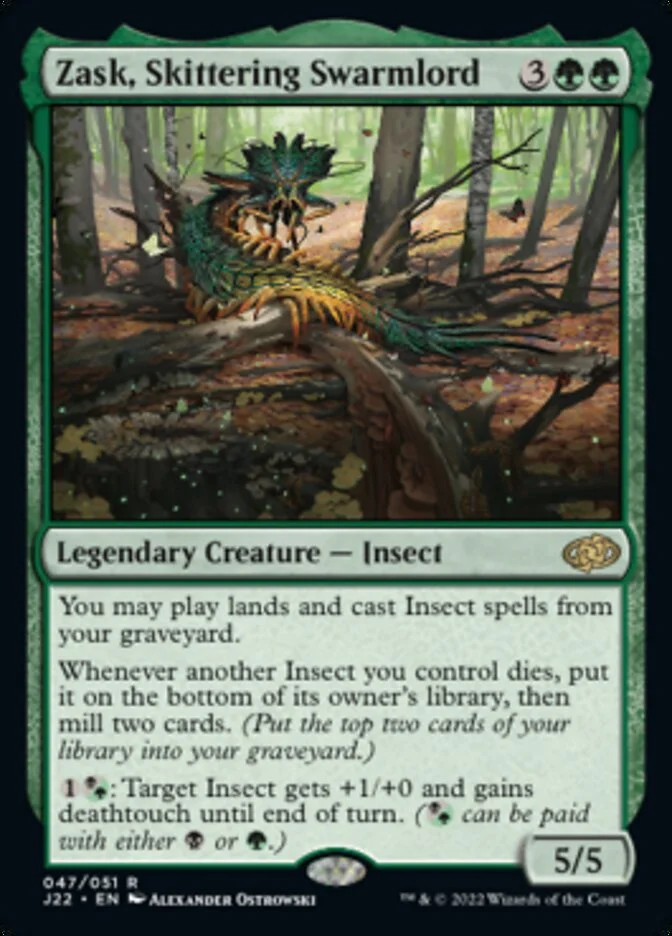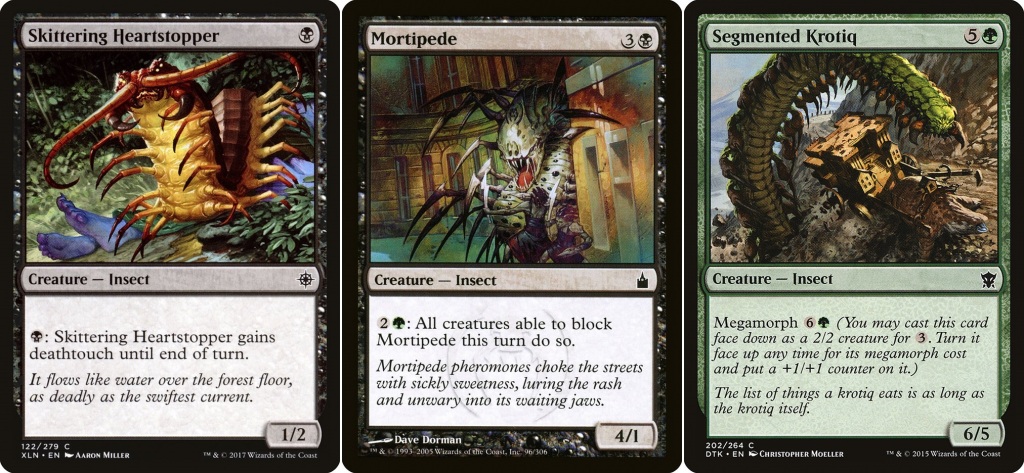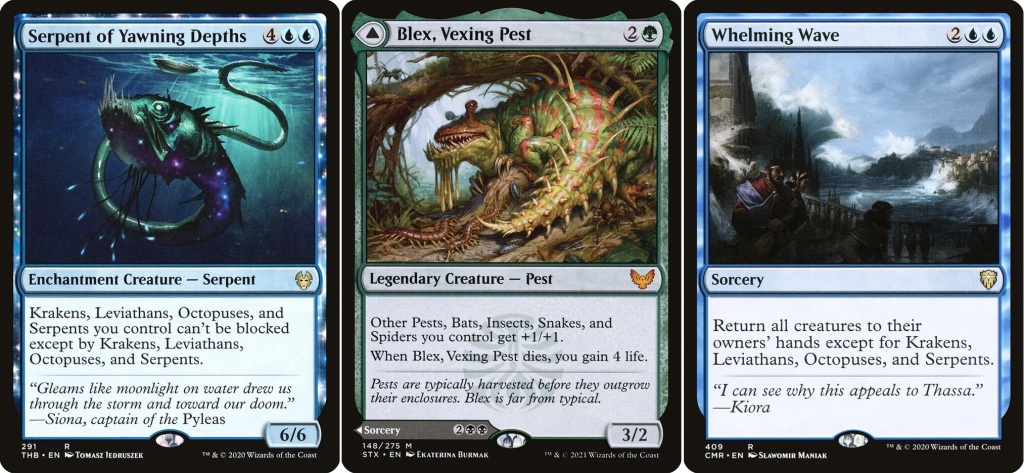It’s InverteFest this week, a celebration of all the overlooked and underloved invertebrates of the world, and to celebrate, I’d like to talk about the latest addition to Magic: the Gathering’s invertebrate family, Zask, Skittering Swarmlord. Magic has been around for about 30 years now, and in that time has accumulated quite a wide variety of invertebrates including insects, arachnids, worms, octopi, crabs, jellyfish, and even a few trilobites. And yet despite that diversity, Magic has a bit of a taxonomy problem, which Zask perfectly exemplifies.

That’s right, once again they’ve labeled a centipede as an insect, a mistake that has been around since the release of Lithophage in 1999 and shows no signs of ever changing. Centipedes, and their close relatives the millipedes, belong to the subphylum Myriapoda (literally “ten-thousand legs”), a group of arthropods notable for (as their name implies) having way too many legs. Centipedes can have anywhere from 30 to 382 legs, with one pair of legs growing out of the side of each of their body segments, while millipedes have two pairs of legs for each segment and typically have between 34 and 400 legs total (although one species, Eumillipes persephone, has been found with over 1300).

Centipedes and millipedes also differ in their diet and feeding behavior. Millipedes tend to be bulky, slow-moving detritivores, calmly munching away on decaying plant matter or fungi, while centipedes tend to be flattened, fast moving predators, hunting down prey and injecting them with venom with their forcipules, heavily modified front legs containing venom sacs that function more like a spider’s fangs than legs. Perhaps unsurprisingly, most artists tend to lean more towards centipede characteristics when creating the monsters found on Magic cards, with millipede features only showing up on creatures with graveyard effects or to add a bit of bulkiness to emphasize their enormity.

Evolutionarily, myriapods branched off from their arthropod relatives during the Cambrian Period, hundreds of millions of years ago. Pneumodesmus newmani, a 1 inch long millipede that lived sometime during the late Silurian/early Devonian period, is believed to be the first animal to ever live on dry land, 40 million years before Tiktaalik led the charge on the vertebrate land invasion. The award for the largest arthropod of all time also goes to a millipede, Athropleura armata, which lived during the Carboniferous period and is believed to have reached lengths of up to 2.7 meters (almost 9 feet) and weighed 110 pounds. While modern day myriapods are nowhere near this size (the largest barely breaking a foot long), Magic artists lean heavily into the colossal, ranging from the size of a man to the size of a building and beyond.

In total, I counted 22 insects that would be more correctly described as centipedes or millipedes, a pretty sizeable count, notably outnumbering several other arthropod groups including Scorpions (14), Trilobites (4), and the sapient lobster race the Homarids (7). But despite this diversity, Magic’s myriapods continue to lumped in with all the beetles, ants, hornets, flies, roaches, and whatever a Barbed Shocker is (a solifuge I think?). Taxonomically it makes sense for them to break off from the rest of the insects, and they certainly have the numbers needed to stand on their own, so why not just break them off? It’s not an unprecedented change: Magic has a long history of changing rules text and card types, so why not here?

Well, there is one reason to not cave to the whims of pedantic entomologists such as myself: game mechanics. Circling back to Zask, Skittering Swarmlord (the entire reason I started writing this blog post), their effect is entirely based around insects. You play insects from your graveyard, when your insects die you put them back into your deck and load some new cards into the graveyard, and for a couple mana you can make your insects just a little bit bigger and a little bit deadlier.
If we were to give all the centipedes and millipedes in the game their own little group to hang out in, then players looking to make a deck full of creepy crawlies would be left with a bunch of thematically appropriate creatures that mechanically don’t belong in their decks. Sure, you could add to the list of creature types included in the effect, something along the lines of Blex, Vexing Pest or the many “sea monster” tribal cards like Serpent of Yawning Depths and Whelming Wave, but then we get into the issue of wordiness.

Cards like Zask are already loaded with effect text, and having to reference multiple creature types will only bloat those cards even further. As much as the pedant in me would like to have everything in its taxonomically accurate box, the bug lover in me would much rather drown my foes in a sea of as many creepy crawlies I can dig up, taxonomies be damned.
Nice
LikeLike